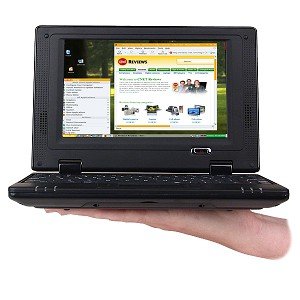In what started as an ambitious project to provide remote students with virtual classrooms, some 30 years ago, India has been roping in different manufacturers as well as has been researching on its own (in its IT Institutes) for a cheap and lightweight computer. It started by asking One Laptop Per Child (OLPC) organization to create something that the poor could easily afford. However, the plan of virtual classrooms was kept back on shelf by University Grants Commission (UGC) when the government and its priorities changed.

Four years back it was revived when IIT-B (Indian Institute of Technology Bombay at Mumbai) came up with the design of world’s cheapest tablet. The tablet was priced at USD 35 and was a failure because it could meet the demand – besides the chips used in the tablet were third grade and several buyers reported that they received non working tablets. Furthermore, the tablet maker, Datawind of Canada, could not fulfil the orders of government and fell back on schedule heavily. Instead, it started selling commercial versions of tablet citing cost subsidy issues with the government.
In an email sent to me by a buyer about the cheapest tablet called Akaash, I was informed that the capacitive touchscreen was hard to handle. In another email, a buyer informed that he received broken tablet and Datawind was not providing any after sales. Consequently, the project was dropped with around 500 students only benefitted with free tablets.
The new government is again emphasizing on it dream project called Digital India. The project intends to connect India to Internet from anywhere – even from the remote areas. Seeing this, the UGC has dusted off the virtual classroom plans and IIT-B again started working on a cheap device.
However, instead of a tablet, it is a netbook this time – world’s cheapest netbook – as it claims. The main reason for switching, says IIT-B, is that tablet can help view the information whereas netbooks can be used to create information. The netbooks are not only good for creating and storing information, but can also be used for learning programming through virtual classes. For that end, the netbook has webcam, speakers and microphone built-in so that students can make maximum use of the devices.
The chairman of IIT-B, heading the project, said that they talked to different manufacturers for components keeping in mind that there should be no compromise on quality and more importantly, the overall price should be within the reach of poor students. It also said that they choose netbooks over tablets also because students can use real big keyboards instead of virtual touch based keyboards. The screen sized should also be big and hence they made it 10” netbooks.
At the time of writing this article, the exact pricing of world’s cheapest netbook was not revealed but it was said that the price will be below USD 100, around Indian Rupees 3000 (USD 50 approx). It remains to be seen how it will be mass-produced and whether if this design will take off or will fail yet again like the Akaash tablet.
I’m not surprised really India’s civilisation is much older than the Western world